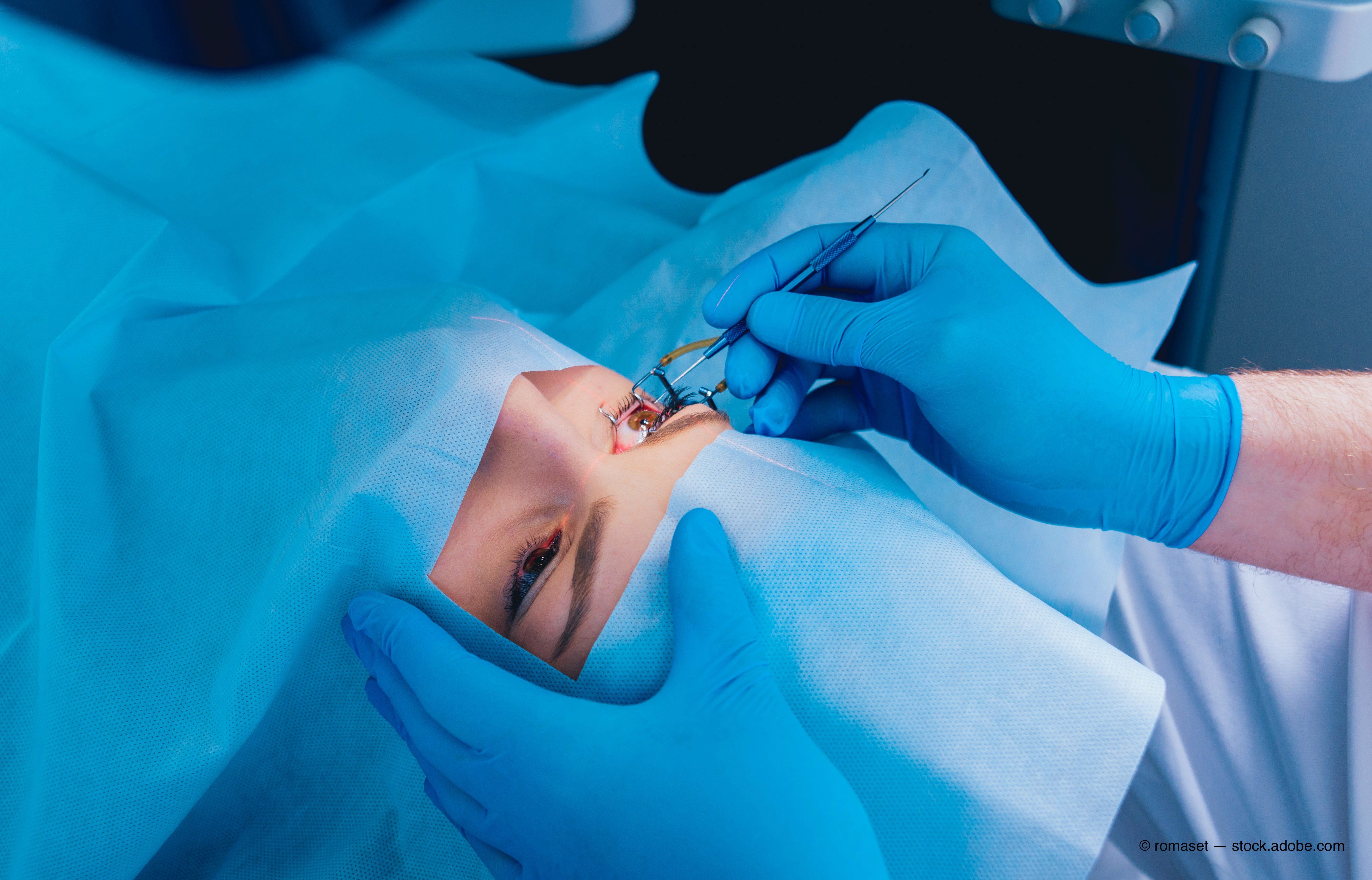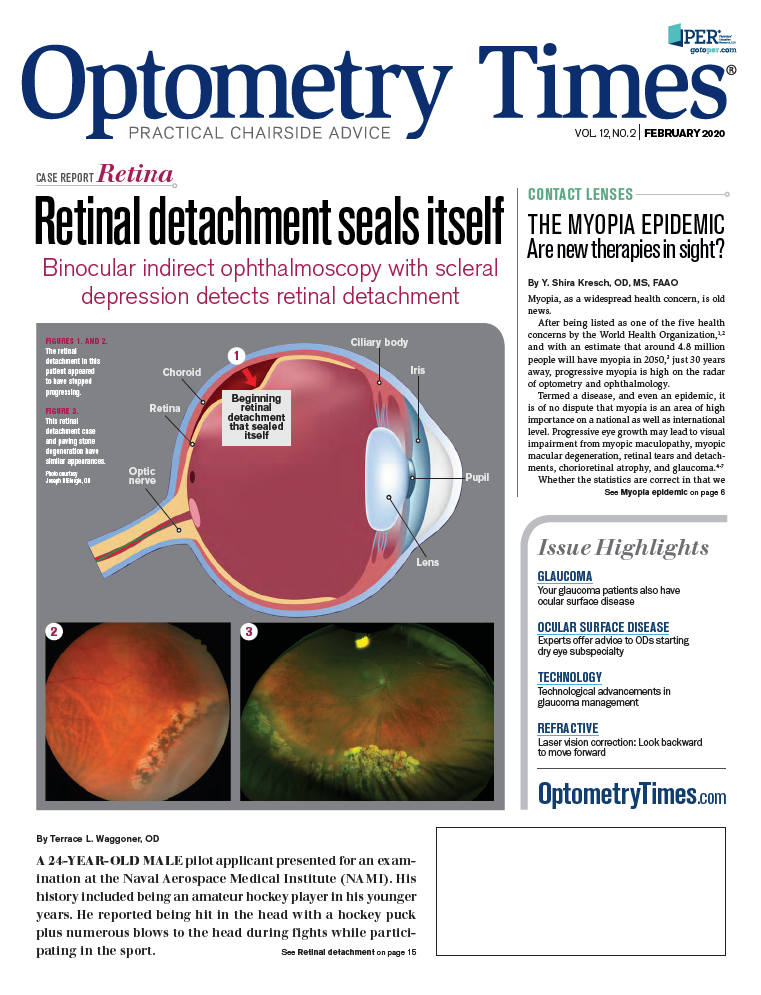Laser vision correction: Look backward to move forward
There is a lot to learn from the history of LASIK if ODs are willing to unearth it.


As laser vision correction improves and lasers become more precise, ODs are able to better identify great candidates for LASIK. And if, during that process, ODs remember old beliefs and conventional wisdoms regarding refractive surgery, it can allow for happy patients with even better vision outcomes.
Listening to Joe Rogan and Robert Downey, Jr. discuss laser vision correction in a recent episode of the “Joe Rogan Experience” podcast was both surreal and amusing.1 To paraphrase Rogan, “LASIK corrects vision, but it does not fix vision for things like we have, like macular degeneration.”
What they have is presbyopia, so he is correct to some degree. Unfortunately, I have had conversations with optometrists who are also confused about laser vision correction, mostly due to the evolution of knowledge surrounding laser in situ keratomileusis (LASIK). This article will cover a few common misconceptions.
Related: Managing LASIK complications
A history of laser correction
About 15 to 20 years ago, every laser center was equipped with a Colvard pupilometer and measuring pupil size in scotopic conditions was necessary. Prior to wavefront-and topography-guided methods of treatment, night vision problems were a significant side effect and concern for those seeking surgery for myopia.
It was believed that scotopic pupil size was a significant contributor to night vision problems. A 2013 article published in the Journal of Refractive Surgery reviewed 19 papers that evaluated pupil size and night vision symptoms.2
In the conclusion, Dr. Schalhorn stated, “Modern LASIK has negated the role of the low light pupil in predicting adverse visual outcomes after LASIK outside of the early postoperative period.”
Related: Unlock the potential of refractive surgery
The majority of studies found no correlation between the low light pupil’s role in predicting visual outcomes after LASIK. Those that found a slight correlation were either evaluating night vision in the early post-operative period or were using optic zones of less than 6 mm.3
Related: Measurements matter in cataract surgery, the new refractive procedure
Night vision after LASIK
So, what should patients be told about night vision symptoms after laser vision correction?
I suggest ODs first ask their patients about night vision problems with their current method of correction. I have found that patients who experience night vision symptoms with their glasses and/ or contact lenses will likely experience the same symptoms after laser vision correction.
Additionally, as the tear layer is getting back to normal, patients will experience night vision symptoms more often than not.
The easiest way to glean that diagnosis from a patient is to ask about vision right after the instillation of an artificial tear. If it clears up, even just for a few seconds or so, the culprit is the tear layer. If it does not clear, then uncorrected refractive error is the more likely culprit.
While a refraction of +0.25-0.50 x 175 does not impact daytime vision for some patients, it can have a significant effect on the quality of night vision, despite uncorrected visual acuity (UCVA) of 20/20.
Related: Surgical, medical approaches making waves in presbyopia
Furthermore, this prescription would deter most surgeons from performing an enhancement. In this case, night-time glasses would be the best solution.
In my clinic, pupil size does not have an impact on determining whether or not a patient is a good candidate. Patients who make poor candidates are those who want laser vision correction to eliminate glare they have with glasses or patients who indicate they never need to wear glasses, especially if they have current night vision challenges.
Related: How to determine an ideal LASIK candidate
The ideal candidate
Another confusing topic within the optometry world is enhancement surgery. In the days of the microkeratome, surgeons would brag about how far out they could successfully lift a flap.
I remember being curious when a surgeon talked about lifting flaps that were seven years old and the procedure itself had been approved for only five years.
Over time what we learned was that not all flaps behaved the same when lifted and not all flaps were made equally. Surgeons would lift flaps that they, themselves, created but not those of other surgeons, and that practice became the norm. The greatest concern with this was epithelial ingrowth.
ODs would sometimes encounter that one patient, usually an older hyperope, who had recurrent ingrowth so problematic that amputation of the flap was the only feasible treatment option. This led to photorefractive keratectomy (PRK) becoming the preferred and most common method of enhancement because PRK eliminated the risk of ingrowth.
The pendulum has swung so far away from where it started, in fact, that some surgeons will not risk lifting a flap, even if it is less than three months old and they, themselves, created it.
Related: Managing dry eye key to patient satisfaction after cataract, refractive surgeries
Modern laser correction
The good news is that laser vision correction has become very accurate and the enhancement rate is around 2 percent or less for quality surgeons.
A study from the Journal of Refractive Surgery has shown us that outcomes from PRK enhancement is significantly poorer than outcomes from flap lift enhancements. Only 72.5 percent of patients achieved 20/20, compared to 91.5 percent who achieved 20/20 with the flap lift three months after the enhancement.
Related: Surgical update 2019: What every OD needs to know
Even more alarming, these patients started with a SE of 1.20 D. One would expect better results from the PRK group, considering the procedure is the current best practice.
The study postulated that epithelial hyperplasia was the likely cause of poor outcomes. The rubric for our clinic has shifted to where we lift all flaps from the original surgeon of myopes under the age of 50.
The risk factors for epithelial ingrowth have always been microkeratome (who don’t do any), hyperopes, and older patients.5 Following this guideline we have not had any of the disaster epithelial ingrowth patients from earlier years.
More and more, I hear patients tell me they have been told they are “too old” for LASIK. Often, the patient is 45 years old. Chronological age is not what limits success with laser vision correction as much as the clinical findings that often accompany increased age.
The first ocular age-related change that occurs is presbyopia. Laser vision correction does not correct this. For low hyperopes and high myopes, presbyopia doesn’t even confound the laser correction discussion.
Related: Combining MIGS approaches paves way for future glaucoma surgeries
For single-vision myopic contact lens wearers, the discussion about reading glasses should have already occurred, leaving the successful multifocal contact lens wearers and glasses wearers to address.
While telling these patients they are “too old” for LASIK shortens the conversation, it won’t stop them from seeking it, particularly if they are fed up with glasses.
It is better to spend the extra time explaining the pros and cons rather than letting the patient decide which method of correction is best.
There are many types of age-related, ocular pathologies that should affect decisions to forego or undergo LASIK. One common challenge are cataracts, and more specifically, determining when a cataract is a cataract.
Certainly, a decrease in best corrected visual acuity is a valid reason to move from a cornea-based surgery to a lens-based procedure. Also, patients who glare test to a level where insurance will consider covering cataract surgery may be best suited for a lens-based procedure. A grayer area is when a patient experiences a myopic shift,but visual acuity remains 20/20. That is not a refractive error I would want to chase with laser vision correction.
As laser vision correction improves and lasers become more precise, ODs are able to better identify great candidates. And if, during that process, ODs remain open minded about old beliefs and conventional wisdom regarding refractive surgery, it will allow for happier patients.
More by Dr. Owen: Recognize signs and treatment for patients with persistent PSP
References:
1. Joe Rogan Experience podcast #1411. Available at: http://podcasts.joerogan.net/podcasts/robertdowney-jr. Accessed 1/31/20.
2. Myung D, Schallhorn S, Manche EE. Pupil size and LASIK: a review. J Refract Surg. 2013 Nov;29(11):734-41.
3. Pop M, Payette Y. Risk factors for night vision complaints after LASIK for myopia. Ophthalmology. 2004 Jan;111(1):3-10.
4. C Chan, M Lawless, G Sutton, C Hodge. Re-treatment in LASIK: To Flap Lift or Perform Surface Ablation. J Refract Surg. 2020;36(1):6-11.
5. Friehmann A, Mimouni M, Nemet AY, Sela T, Munzer G, Kaiserman I. Risk Factors or Epithelial Ingrowth Following Microkeratome-Assisted LASIK. J Refract Surg. 2018 Feb 1;34(2):100-105.

Newsletter
Want more insights like this? Subscribe to Optometry Times and get clinical pearls and practice tips delivered straight to your inbox.